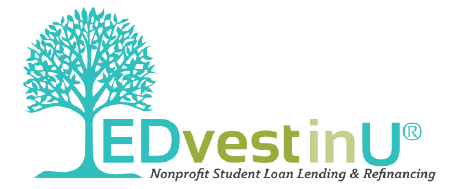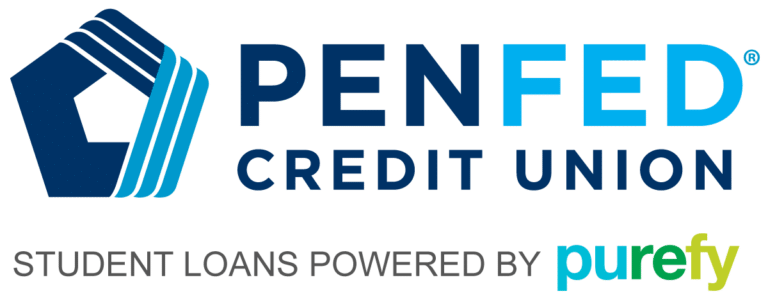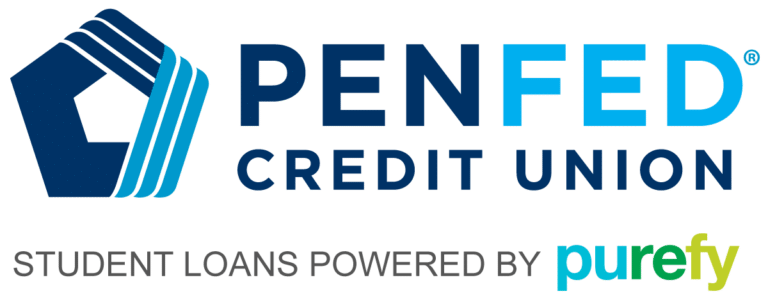Paying for Christmas gifts and other holiday-related costs such as food or travel can be expensive, especially if you have lost your job or are working fewer hours. In fact, 11.5% of Americans say they won’t be spending any money on holiday expenses in 2021, according to a survey by Deloitte.
If you need help covering holiday expenses, taking out a Christmas loan might be a good option.
Here’s what you should know about Christmas loans:
What is a Christmas loan?How to qualify for a holiday loanPros of getting a Christmas loanCons of getting a Christmas loanWatch out for predatory loansTips for a debt-free holiday season
What is a Christmas loan?
You might see some lenders advertise special “Christmas loans” — but these are usually just personal loans that can be used for holiday expenses. Here are several important points to keep in mind if you’re considering a personal loan for Christmas:
Interest rates: The rate you get on a personal loan will depend on the lender as well as other factors, such as your credit score and the repayment term you choose. Average personal loan interest rates generally range from 4.99% to 36%. Repayment terms: You’ll typically have one to seven years to repay a personal loan, depending on the lender. While longer terms can provide lower monthly payments, it’s usually a good idea to choose the shortest term you can afford to keep your interest costs as low as possible. Many lenders also offer lower rates to borrowers who opt for shorter terms.Fees: Some lenders charge fees on personal loans, such as origination or late fees. These can increase your overall loan cost. Keep in mind that if you take out a loan with one of Credible’s partner lenders, you won’t have to worry about prepayment penalties.Time to fund: If you’re approved for a personal loan, you can generally expect to get your fund in about one week, depending on the lender. There are also some lenders that will fund loans as soon as the same or next business day after approval — which could be helpful if you need the money quickly for Christmas.
If you decide to take out a Christmas loan, it’s important to shop around and consider as many lenders as possible. This way, you can find the right loan for your needs.
Credible makes this easy — you can compare your prequalified rates from our partner lenders in the table below in just two minutes.
LenderFixed ratesLoan amountsMin. credit scoreLoan terms (years)

Credible Rating>

Credible lender ratings are evaluated by our editorial team with the help of our loan operations team. The rating criteria for lenders encompass 78 data points spanning interest rates, loan terms, eligibility requirement transparency, repayment options, fees, discounts, customer service, cosigner options, and more. Read our full methodology.





View details>
9.95% – 35.99% APR$2,000 to $35,0005502, 3, 4, 5*Fixed APR:
9.95% – 35.99% APRVariable APR:
N/AMin. credit score:
550Loan amount:
$2,000 to $35,000**Loan terms (years):
2, 3, 4, 5*Time to fund:
As soon as the next business day (if approved by 4:30 p.m. CT on a weekday)Fees:
Origination feeDiscounts:
AutopayEligibility:
Available in all states except CO, IA, HI, VT, NV NY, WVCustomer service:
Phone, emailSoft credit check:
YesLoan servicer:
AvantLoan Uses:
Debt consolidation, emergency expense, life event, home improvement, and other purposesMin. Income:
$1,200 monthly

Credible Rating>

Credible lender ratings are evaluated by our editorial team with the help of our loan operations team. The rating criteria for lenders encompass 78 data points spanning interest rates, loan terms, eligibility requirement transparency, repayment options, fees, discounts, customer service, cosigner options, and more. Read our full methodology.





View details>
6.79% – 17.99% APR$10,000 to $50,0007003, 4, 5, 6Fixed APR:
6.79% – 17.99% APRVariable APR:
N/AMin. credit score:
700Loan amount:
$10,000 to $50,000Loan terms (years):
3 to 6Time to fund:
Next business dayFees:
No prepayment penaltyDiscounts:
NoneEligibility:
Available in all 50 statesCustomer service:
PhoneSoft credit check:
YesMin. Income:
Does not discloseLoan Uses:
Debt consolidation, home improvement, self-employment, and other purposes
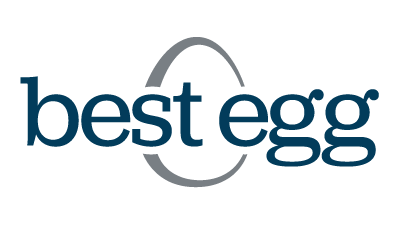
Credible Rating>

Credible lender ratings are evaluated by our editorial team with the help of our loan operations team. The rating criteria for lenders encompass 78 data points spanning interest rates, loan terms, eligibility requirement transparency, repayment options, fees, discounts, customer service, cosigner options, and more. Read our full methodology.





View details>
4.99% – 35.99% APR$5,000 to $35,0006002, 3, 4, 5Fixed APR:
4.99% – 35.99% APRVariable APR:
N/AMin. credit score:
600Loan amount:
$2,000 to $50,000Loan terms (years):
2, 3, 4, 5Time to fund:
As soon as 1 – 3 business days after successful verificationFees:
Origination feeDiscounts:
NoneEligibility:
Available in all states except DC, IA, VT, and WVCustomer service:
PhoneSoft credit check:
YesLoan servicer:
Best Egg and Blue Ridge BankMin. Income:
NoneLoan Uses:
Credit card refinancing, debt consolidation, home improvement, and other purposes
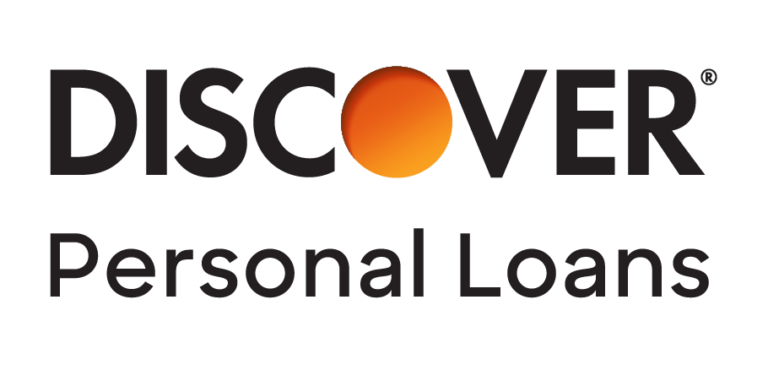
Credible Rating>

Credible lender ratings are evaluated by our editorial team with the help of our loan operations team. The rating criteria for lenders encompass 78 data points spanning interest rates, loan terms, eligibility requirement transparency, repayment options, fees, discounts, customer service, cosigner options, and more. Read our full methodology.





View details>
5.99% – 24.99% APR$2,500 to $35,0006603, 4, 5, 6, 7Fixed APR:
5.99% – 24.99% APRMin. credit score:
660Loan amount:
$2,500 to $35,000Loan terms (years):
3, 4, 5, 6, 7Time to fund:
As soon as the next business day after acceptanceFees:
Late feeDiscounts:
NoneEligibility:
Available in all 50 statesCustomer service:
PhoneSoft credit check:
YesLoan Uses:
Auto repair, credit card refinancing, debt consolidation, home remodel or repair, major purchase, medical expenses, taxes, vacation, and wedding

Credible Rating>

Credible lender ratings are evaluated by our editorial team with the help of our loan operations team. The rating criteria for lenders encompass 78 data points spanning interest rates, loan terms, eligibility requirement transparency, repayment options, fees, discounts, customer service, cosigner options, and more. Read our full methodology.





View details>
7.99% – 29.99% APR$10,000 to $50,000Not disclosed by lender2, 3, 4, 5Fixed APR:
7.99% – 29.99% APRMin. credit score:
Does not discloseLoan amount:
$10,000 to $50,000Loan terms (years):
2, 3, 4, 5Time to fund:
As soon as 2 business daysFees:
Origination feeDiscounts:
NoEligibility:
Available in all states except CO, CT, HI, KS, NH, NY, ND, OR, VT, WV, WI, and WYCustomer service:
PhoneSoft credit check:
YesMin. Income:
NoneLoan Uses:
Debt consolidation, home improvement, wedding, travel, medical expenses, and other purposes

Credible Rating>

Credible lender ratings are evaluated by our editorial team with the help of our loan operations team. The rating criteria for lenders encompass 78 data points spanning interest rates, loan terms, eligibility requirement transparency, repayment options, fees, discounts, customer service, cosigner options, and more. Read our full methodology.





View details>
7.04% – 35.89% APR$1,000 to $40,0006003, 5Fixed APR:
7.04% – 35.89% APRMin. credit score:
600Loan amount:
$1,000 to $40,000Loan terms (years):
3, 5Time to fund:
Usually takes about 2 daysFees:
Origination feeDiscounts:
NoneEligibility:
Available in all 50 statesCustomer service:
Phone, emailSoft credit check:
YesLoan servicer:
LendingClub BankMin. Income:
NoneLoan Uses:
Debt consolidation, paying off credit cards, home improvement, pool loans, vacations, and other purposes
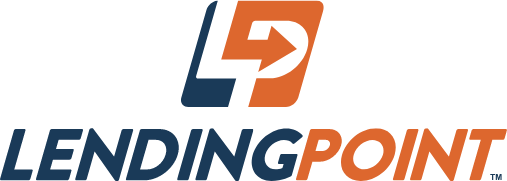
Credible Rating>

Credible lender ratings are evaluated by our editorial team with the help of our loan operations team. The rating criteria for lenders encompass 78 data points spanning interest rates, loan terms, eligibility requirement transparency, repayment options, fees, discounts, customer service, cosigner options, and more. Read our full methodology.





View details>
9.99% – 35.99% APR$2,000 to $36,5005802, 3, 4Fixed APR:
9.99% – 35.99% APRMin. credit score:
580Loan amount:
$2,000 to $36,500Loan terms (years):
2, 3, 4Time to fund:
As soon as the next business dayFees:
Origination feeDiscounts:
AutopayEligibility:
Available in all states except NV and WVCustomer service:
Phone, emailSoft credit check:
YesMin. Income:
$20,000Loan Uses:
Home improvement, consolidate debt, credit card refinancing, relocate, make a large purchase, and other purposes

Credible Rating>

Credible lender ratings are evaluated by our editorial team with the help of our loan operations team. The rating criteria for lenders encompass 78 data points spanning interest rates, loan terms, eligibility requirement transparency, repayment options, fees, discounts, customer service, cosigner options, and more. Read our full methodology.





View details>
2.49% – 19.99% APR$5,000 to $100,0006602, 3, 4, 5, 6, 7
(up to 12 years for home improvement loans)Fixed APR:
2.49% – 19.99% APRMin. credit score:
660Loan amount:
$5,000 to $100,000Loan terms (years):
2, 3, 4, 5, 6, 7*Time to fund:
As soon as the same business dayFees:
NoneDiscounts:
AutopayEligibility:
Available in all states except RI and VTCustomer service:
Phone, emailSoft credit check:
NoLoan servicer:
LightStreamMin. Income:
Does not discloseLoan Uses:
Credit card refinancing, debt consolidation, home improvement, and other purposes

Credible Rating>

Credible lender ratings are evaluated by our editorial team with the help of our loan operations team. The rating criteria for lenders encompass 78 data points spanning interest rates, loan terms, eligibility requirement transparency, repayment options, fees, discounts, customer service, cosigner options, and more. Read our full methodology.





View details>
6.99% – 19.99% APR1$3,500 to $40,0002660
(TransUnion FICO®️ Score 9)3, 4, 5, 6, 7Fixed APR:
6.99% – 19.99% APR1Min. credit score:
660
(TransUnion FICO®️ Score 9)Loan amount:
$3,500 to $40,0002Loan terms (years):
3, 4, 5, 6Time to fund:
Many Marcus customers receive funds in as little as three daysFees:
NoneDiscounts:
AutopayEligibility:
Available in all 50 statesCustomer service:
PhoneSoft credit check:
YesLoan servicer:
Goldman SachsMin. Income:
$30,000Loan Uses:
Credit card refinancing, debt consolidation, home improvement, major purchase, and other purposes
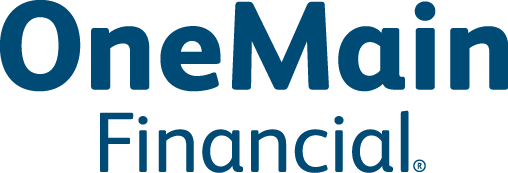
Credible Rating>

Credible lender ratings are evaluated by our editorial team with the help of our loan operations team. The rating criteria for lenders encompass 78 data points spanning interest rates, loan terms, eligibility requirement transparency, repayment options, fees, discounts, customer service, cosigner options, and more. Read our full methodology.





View details>
18.0% – 35.99% APR$1,500 to $20,000None2, 3, 4, 5Fixed APR:
18.0% – 35.99% APRMin. credit score:
NoneLoan amount:
$1,500 to $20,000Loan terms (years):
2, 3, 4, 5Time to fund:
As soon as the same day, but usually requires a visit to a branch officeFees:
Origination feeDiscounts:
NoneEligibility:
Must have photo I.D. issued by U.S. federal, state or local governmentCustomer service:
Phone, emailSoft credit check:
YesMin. Income:
Does not disclose

Credible Rating>

Credible lender ratings are evaluated by our editorial team with the help of our loan operations team. The rating criteria for lenders encompass 78 data points spanning interest rates, loan terms, eligibility requirement transparency, repayment options, fees, discounts, customer service, cosigner options, and more. Read our full methodology.





View details>
5.99% – 17.99% APR$600 to $50,000
(depending on loan term)6601, 2, 3, 4, 5Fixed APR:
5.99% – 17.99% APRMin. credit score:
660Loan amount:
$600 to $50,000*Loan terms (years):
1, 2, 3, 4, 5Time to fund:
2 to 4 business days after verificationFees:
NoneDiscounts:
NoneEligibility:
Does not discloseCustomer service:
Phone, emailSoft credit check:
NoMin. Income:
Does not discloseLoan Uses:
Debt consolidation, home improvement, transportation, medical, dental, life events

Credible Rating>

Credible lender ratings are evaluated by our editorial team with the help of our loan operations team. The rating criteria for lenders encompass 78 data points spanning interest rates, loan terms, eligibility requirement transparency, repayment options, fees, discounts, customer service, cosigner options, and more. Read our full methodology.





View details>
6.95% – 35.99% APR$2,000 to $40,0006403, 5Fixed APR:
6.95% – 35.99% APRMin. credit score:
640Loan amount:
$2,000 to $40,000Loan terms (years):
3, 5Time to fund:
As soon as one business dayFees:
Origination feeDiscounts:
NoneEligibility:
Available in all states except IA, ND, WVCustomer service:
Phone, emailSoft credit check:
YesMin. Income:
NoneLoan Uses:
Debt consolidation, home improvement, vehicles, small business, new baby expenses, and other purposes

Credible Rating>

Credible lender ratings are evaluated by our editorial team with the help of our loan operations team. The rating criteria for lenders encompass 78 data points spanning interest rates, loan terms, eligibility requirement transparency, repayment options, fees, discounts, customer service, cosigner options, and more. Read our full methodology.





View details>
4.74% – 19.28% APR10$5,000 to $100,000Does not disclose2, 3, 4, 5, 6, 7Fixed APR:
4.74% – 19.28% APR10Min. credit score:
Does not discloseLoan amount:
$5,000 to $100,000Loan terms (years):
2, 3, 4, 5, 6, 7Time to fund:
3 business daysFees:
NoneDiscounts:
AutopayEligibility:
Available in all states except MSCustomer service:
Phone, emailSoft credit check:
YesMin. Income:
Does not discloseLoan Uses:
Solely for personal, family, or household uses

Credible Rating>

Credible lender ratings are evaluated by our editorial team with the help of our loan operations team. The rating criteria for lenders encompass 78 data points spanning interest rates, loan terms, eligibility requirement transparency, repayment options, fees, discounts, customer service, cosigner options, and more. Read our full methodology.





View details>
8.93% – 35.93% APR7$1,000 to $50,0005603 to 5 years 8Fixed APR:
8.93% – 35.93% APR7Min. credit score:
560Loan amount:
$1,000 to $50,000Loan terms:
3 to 5 years 8Time to fund:
Within one day, once approved9Loan types:
Debt consolidation, pay off credit cards, home improvements, unexpected expenses, home and auto repairs, weddings, and other major purchasesFees:
Origination feeDiscounts:
AutopayEligibility:
A U.S. citizen or permanent resident; not available in DC, SC, WVCustomer service:
Phone, emailSoft credit check:
Yes

Credible Rating>

Credible lender ratings are evaluated by our editorial team with the help of our loan operations team. The rating criteria for lenders encompass 78 data points spanning interest rates, loan terms, eligibility requirement transparency, repayment options, fees, discounts, customer service, cosigner options, and more. Read our full methodology.





View details>
5.94% – 35.97% APR$1,000 to $50,0005602, 3, 5, 6Fixed APR:
5.94% – 35.97% APRMin. credit score:
560Loan amount:
$1,000 to $50,000*Loan terms (years):
2, 3, 5, 6Time to fund:
Within a day of clearing necessary verificationsFees:
Origination feeDiscounts:
AutopayEligibility:
Available in all states except West VirginiaCustomer service:
EmailSoft credit check:
YesMin. Income:
Does not discloseLoan Uses:
Debt consolidation, credit card refinancing, home improvement, and other purposes

Credible Rating>

Credible lender ratings are evaluated by our editorial team with the help of our loan operations team. The rating criteria for lenders encompass 78 data points spanning interest rates, loan terms, eligibility requirement transparency, repayment options, fees, discounts, customer service, cosigner options, and more. Read our full methodology.





View details>
4.37% – 35.99% APR4$1,000 to $50,00055803 to 5 years4Fixed APR:
4.37% – 35.99% APR4Min. credit score:
580Loan amount:
$1,000 to $50,0005Loan terms (years):
3 to 5 years4Time to fund:
As fast as 1 business day6Fees:
Origination feeDiscounts:
NoneEligibility:
Available in all 50 statesCustomer service:
Phone, emailSoft credit check:
YesMin. Income:
$12,000Loan Uses:
Payoff credit cards, consolidate debt, take a course or bootcamp, relocate, make a large purchase, and other purposesCompare rates from these lenders without affecting your credit score. 100% free!
Compare Now
Trustpilot
All APRs reflect autopay and loyalty discounts where available | LightStream disclosure | 10SoFi Disclosures | Read more about Rates and Terms
Christmas loans for bad credit
You’ll generally need good to excellent credit to qualify for a personal loan — a good credit score is usually considered to be 700 or higher. There are also several lenders that offer personal loans for bad credit, but these loans usually come with higher interest rates compared to good credit loans.
If you’re struggling to get approved for a Christmas loan, here are a couple of options to consider:
Take out a secured personal loan. While most personal loans are unsecured, some lenders offer secured personal loans that require collateral. Because these loans are less risky for the lender, you might have an easier time qualifying if you have poor or fair credit.Apply with a cosigner. You might also consider applying with a creditworthy cosigner, which could improve your approval odds. Not all lenders allow cosigners on personal loans, but some do. Even if you don’t need a cosigner to qualify, having one could get you a lower interest rate than you’d get on your own. Tip: It could also be a good idea to work on building your credit so you’ll have an easier time qualifying for loans in the future. There are several potential ways to do this, such as making on-time payments on all of your bills and paying down credit card balances.
Learn More: Getting a Loan with No Credit: 5 Loans for New Borrowers
How to qualify for a holiday loan
While eligibility criteria for a personal loan can vary by lender, there are a few common requirements you’ll likely come across, including:
Good credit: You’ll generally need good to excellent credit to qualify for a personal loan. If you have poor or fair credit, having a creditworthy cosigner could improve your chances of approval.Verifiable income: Some personal loan lenders have a minimum income requirement while others don’t — but in either case, you’ll likely need to provide proof of income to show that you can repay the loan.Low debt-to-income ratio: Your debt-to-income (DTI) ratio is the amount you owe in monthly debt payments compared to your income. To get approved for a personal loan, your DTI ratio shouldn’t be higher than 40% — though some lenders might require a lower ratio than this.
Check Out: Credit Card Consolidation Loans
Pros of getting a Christmas loan
Christmas loans offer a few potential benefits, including:
Lower interest rates: Personal loan interest rates tend to be lower than credit card rates.Fixed payments: Personal loans typically come with fixed interest rates, which means your payments will stay the same throughout the life of your loan.Fast funding: The time to fund for a personal loan is usually about one week — though with some lenders, you might get your money as soon as the same or next business day after approval.
Cons of getting a Christmas loan
There are also some possible downsides of Christmas loans to keep in mind, such as:
Fewer options for bad credit: If you have poor or fair credit, it could be harder to get approved for a personal loan.Increased debt: Getting a personal loan means you’ll have another payment to manage on top of any other debts you might already have. If you’re already stretched financially thin, taking on another loan might not be a good idea.No rewards or perks: Unlike many credit cards, personal loans don’t offer any rewards or perks.
If you decide to get a personal loan, remember to consider as many lenders as you can to find the right loan for your situation. This is easy with Credible: You can compare your prequalified rates in two minutes — without affecting your credit.
Ready to find your personal loan?
Credible makes it easy to find the right loan for you.
Free to use, no hidden feesOne simple form, easy to fill out and your info is protectedMore options, pick the loan option that best fits your personal needsHere for you. Our team is here to help you reach your financial goalsFind My Rate
Checking rates won’t affect your credit
Trustpilot
Watch out for predatory loans
If you need a small, short-term personal loan for Christmas, it’s critical to make sure you’re working with a vetted lender that provides reasonable rates and terms. This is especially true if you have poor or fair credit since predatory lenders and scammers often target borrowers with bad credit who are desperate for a loan.
Here are a few types of loans to watch out for:
Payday loans: While these short-term loans generally don’t require a credit check, they can come with astronomical rates and fees — sometimes as high as 300% to 500% APR. If you can’t quickly repay a payday loan, you could get stuck in a revolving debt cycle that could be hard to escape.Pawn shop loansThese loans are offered by pawn shops and require you to provide an item of value as collateral. If you don’t pay off the loan, the pawn shop can sell your item. Like payday loans, pawn shop loans can also come with extremely high rates and fees. Car title loans With this type of loan, you’ll give the lender the title of your car (or motorcycle). You’ll typically have to repay a car title loan within a short amount of time — usually 30 days or less. If you fall behind on your payments, the lender could seize your vehicle.
If you’re looking for a personal loan, here are a few personal loan scam warning signs to watch out for:
Using high-pressure sales tacticsNot requiring a credit check Approaching you about the loan out of the blueNot having a physical address
Go with your gut — if something feels off about a lender, it probably is. Also keep in mind that if you compare your options with Credible, you’ll be working with vetted, trustworthy lenders.
Learn More: How to Check If a Personal Loan Company Is Legitimate
Tips for a debt-free holiday season
While taking out a Christmas loan could help you cover last-minute holiday expenses, here are also a few other strategies that could help you avoid holiday stress:
Set a budget. Creating a budget based on your income is a great way to determine what you can actually afford to spend for Christmas.Look for deals. Scour the internet and your local shops for deals on what you’re looking for to lower your overall costs. For example, consider taking advantage of savings offered on Black Friday, Cyber Monday, and other shopping holidays.Stick to the basics. It’s easy to get caught up in the moment and buy what you want (or what someone else wants). But try to be firm whenever you can or compromise when necessary. For example, you might buy a couple of small, practical gifts for those on your list instead of a big expensive gift for each person.
If getting a Christmas loan seems like the right fit for you, remember to consider as many lenders as you can to find the best loan for your needs. Additionally, be sure to think about the overall cost of the loan before you borrow — this way, you can be prepared for any added expenses.
You can estimate how much you’ll pay for a loan using our personal loan calculator below.
Enter your loan information to calculate how much you could pay
Loan amountEnter the total amount borrowedInterest rateEnter your annual interest rateorLoan termEnter the amount of time you have to repay your loanyears
Total Payment>
Total Interest>
Monthly Payment>
With a>
loan, you will pay>
monthly and a total of>
in interest over the life of your loan. You will pay a total of>
over the life of the
loan.
The post Are Christmas Loans Worth It? Pros and Cons of Taking Out a Loan this Holiday Season appeared first on Credible.































